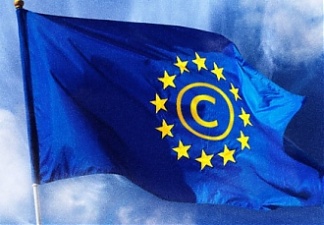The vote of the European Parliament of 12 September last on amendments to the draft EU Digital Single Market Copyright Directive (the “Copyright Directive”) gave rise to fierce debate between the draft’s supporters and detractors who were, on certain issues, alignedin opposing factions. The most hotly discussed matters were Article 11 on the new neighbouring right of publishers to receive payment from online platforms for digital use of their works, save for simple links and individual words, and Article 13 whereby providers of online sharing services (for example YouTube) carry out acts of communication to the public which are the preserve of copyright holders, resulting in the need for a system of licences for exploitation of the related content.
The text of the draft Directive has also triggered discussion in the sector of tech start-ups whose business centres on text and data mining (TDM), a technique for collecting data from large datasets in order to draw new patterns and correlations which may reveal useful trends and data. The current version of Article 3, just like that of the original Directive text proposed by the European Commission, provides for adoption by Member States of exceptions to copyright for research bodies and for educational institutions and associationsfor the preservation of cultural heritage which conduct scientific research. The aim is to liberalize TDM for the purposes of scientific research, for didactic illustrative purposes in a digital environment and for the preservation of cultural heritage, provided that parties conducting TDM have lawful access to the works or content thereof. The draft Directive provides for specific counterweights aimed at ensuring that the new system of exceptions for the purposes of research is not side-stepped: firstly, the results of TDM activity must not be to the benefit of an enterprisewhich exercises a dominant influence on the research bodies; secondly, in the event of public-private partnership models, participating firms must have lawful access to the works or other content upon which TDM is being conducted.
TDM in favour of the private sector was not expressly covered by the original text of the Commission though, generating a certain alarmism among firms in the sector. However, during the vote of 12 September the European Parliament approved an optional exception to copyright, broader than the exception provided for research purposes, which is also applicable to the private sector (Article 3a) and for which there are three precise conditions: that parties whichconduct TDM have lawful access to the works or materials from which they mine data; that copyright holders have not expressly reserved their rights, including by machine readable means; that the mining and reproduction conducted by means of TDM are not used for purposes other than TDM.
In general terms, the diffusion of the TDM technique has been accepted by EU institutions as an impetus to adapt the system of exceptions to copyright which is, in certain respects, technologically obsolete, to new forms of exploitation of works and content. Harmonization of the legislations of the various Member States in matters of copyright and TDM is also aimed at facilitating the conduction of such activities across borders, valorizing the contribution that they make to the growth of the Digital Single Market.
Although, on the one hand, the new mandatory exceptions to copyright in matters of TDM for the purposes of scientific research are fully in line with the previous system and can be seen as a reasonable adaptation to the technological context, the introduction of a broader exception, also applicable to the private sector, is not completely convincing. This is due not so much to reasons of legislative policy on the advisability of introducing/not introducing such an exception, which is moreover not mandatory for Member States, as to the wording thereof, which is rather cryptic and correlated to the technical notion of “machine readable means”, which the draft Directive does not define.



